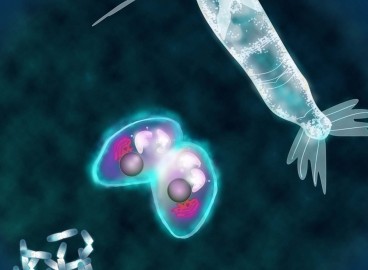In this article, featured in the July issue of Microbe magazine, Darwin Project researcher Stephanie Dutkiewicz explains how, when used properly, models provide valuable insights into complex systems and sometimes yield surprising, even counterintuitive outcomes.
Category Archives: Trait Based Approaches
Publication
Dutkiewicz, S. (2012), Power in Modeling Virtual Marine Microbes, Microbes magazine, 7, 314-319, LINK
Publication
Ward, B.A., S. Dutkiewicz, O. Jahn, and M.J. Follows (2012), A size structured food-web model for the global ocean: Linking physiology, ecology and biogeography, Limnology and Oceanography, 57, 1877-1891, doi: 10.4319/lo.2012.57.6.1877

Microbe Metabolism
Population growth rate is a fundamental ecological and evolutionary characteristic of living organisms, but individuals must balance the metabolism devoted to biosynthesis and reproduction against the maintenance of existing structure and other functionality. Chris Kempes, Stephanie Dutkiewicz and Mick Follows have developed a mathematical model relating metabolic partitioning to the form of growth. The research is published in the Dec. 26 issue of the Proceedings of the National Academy of Sciences.
Publication
Follows, M.J. and S. Dutkiewicz (2011), Modeling diverse communities of marine microbes, Annual Reviews of Marine Science, 3, 427-451, doi: 10.1146/annurev-marine-120709-142848
Publication
Hickman, A.E., S. Dutkiewicz, R.G. Williams, and M.J. Follows (2010), Modelling the effects of chromatic adaptation on phytoplankton comunity structure in the oligotrophic ocean. Marine Ecology Progress Series, 406, 1-17, doi:10.3354/meps08588
Publication
Verdy, A., M. Follows and G. Flierl (2009), Evolution of phytoplankton cell size in an allometric model, Marine Ecology Progress Series, 379, 1-12, doi: 10.3354/meps07909